Monitoring versus control, what you need to know when servicing food areas
One of the key components of an IPM program is monitoring. Using some type of glue device that captures pests as they move around an indoor environment is essential.
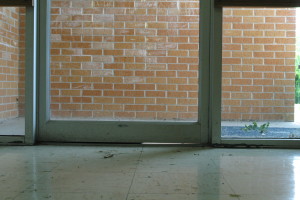 In most building settings, the building envelop is not sealed adequately to keep pests like ants, crickets, spiders, and occasionally mice out. At the same time, in certain areas, monitoring is the only way to know if you have a pest problem.
In most building settings, the building envelop is not sealed adequately to keep pests like ants, crickets, spiders, and occasionally mice out. At the same time, in certain areas, monitoring is the only way to know if you have a pest problem.
Monitoring is using visual and manual observations to observe trends and changes in pest activity  over time (sampling). Visual observations include inspections which goes beyond looking at a pest log, visual observations require you to look high and low to see if there are evidence of pests.
over time (sampling). Visual observations include inspections which goes beyond looking at a pest log, visual observations require you to look high and low to see if there are evidence of pests.
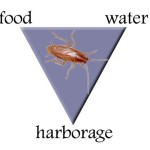 All pests need food, water and harborage to survive.
All pests need food, water and harborage to survive.
Sampling is observing sticky cards and recording pest presence or numbers to see if they meet your action thresholds that trigger a physical, mechanical, biological or chemical treatment. Thresholds are boundaries between acceptable and unacceptable pest levels. The Texas Department of Agriculture (TDA) requires each school district to have written thresholds for important insects, weeds as part of their IPM program. TDA has updated the TX School IPM Rules to allow the use of non-pesticide tools and devices by unlicensed school district personnel, for monitoring purposes, shall be permitted. Monitoring by unlicensed school district personnel shall be done only as directed, under the supervision of the IPM Coordinator. This allowance by TDA helps the IPM program by allowing the coordinator to use sticky traps to determine if there is a pest problem or not. Only licensed applicators can make the decision to treat.
Sampling is observing sticky cards and recording pest presence or numbers to see if they meet your action thresholds that trigger a physical, mechanical, biological or chemical treatment. Thresholds are boundaries between acceptable and unacceptable pest levels. The Texas Department of Agriculture (TDA) requires each school district to have written thresholds for important insects, weeds as part of their IPM program. Recently TDA , updated the TX School IPM Rules to allow the use of non-pesticide tools and devices by unlicensed school district personnel, for monitoring purposes, shall be permitted. Monitoring by unlicensed school district personnel shall be done only as directed, under the supervision of the IPM Coordinator. This allowance by TDA helps the IPM program by allowing the coordinator to use sticky traps to determine if there is a pest problem or not. Only licensed applicators can make the decision to treat.
Per the U.S. Food and Drug Administration Food Code, insects and other pests are capable of transmitting disease to humans by contaminating food and food-contact surfaces. Effective measures must be taken to eliminate their presence in food establishments.
Insect electrocution devices are considered supplemental to good sanitation practices in meeting the Code requirement for controlling the presence of flies and other insects in a food establishment.
Improper design of the device and dead insect collection tray could allow dead insect parts and injured insects to escape, rendering the device itself a source of contamination.
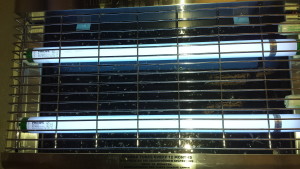
Light traps are good provided you change the boards frequently, using the information to make decisions about treatment.
Exposed food and food-contact surfaces must be protected from contamination by insects or insect parts. Installation of the device over food preparation areas or in close proximity to exposed food and/or food-contact surfaces could allow dead insects and/or insect parts to be impelled by the electric charge, fall, or be blown from the device onto food or food-contact surfaces.
One of the most confusing aspects of the FDA code is that most pest management professionals are unaware that these rules apply to them and how they control pests in kitchens.
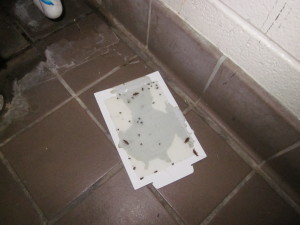
Sampling for pests helps applicators an idea of what to use and how much to use to solve pest problem.
This kitchen was having a fly issue. Using a device like the glue board shown does allow an IPM coordinator the ability to safely say “the kitchen has pests”. And the PMP was able to establish a treatment plan based on their thresholds. However, for the kitchen manager who will be inspected by the Dept. of Health, to allow this glue device to used in “her” kitchen can put her at odds with the Dept. of Health inspector.
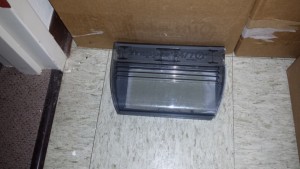
In wet areas and around food prep areas, using a closed device like this can do many things at once.
Instead, using a closed receptacle like the image seen here, allows pests to crawl in, but not necessarily crawl out. In one case, a PMP used the Trapper Device to not only catch possible insects, but he used a cockroach bait to help control a German cockroach problem happening in a school principal’s office.
Placing out a sticky card as seen here in the image to the left, with a bait station sends the wrong message and may not gain the results you want as well.

Depending on your pest, choose the right monitoring device, each one of these devices work for different pests.
Using glue boards and sticky cards are the best way for TX schools to stay in compliance with the TX school IPM rules. Which require a monitoring program to determine when pests are present and when pest problems are severe enough to justify corrective action. Routine pesticide applications (insecticide, herbicide, rodenticide, etc.) are not considered part of an IPM program. However, monitoring for a pest problem and then taking proper action for that problem is IPM.
For more information about the updated Food Code check out this link.
SPN:Glue Boards Handout for IPM coordinators to use with school staff and others about this topic.
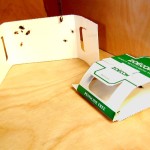
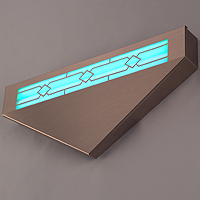
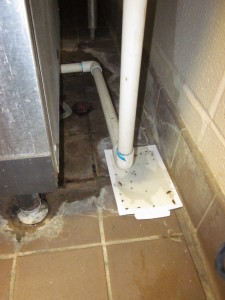
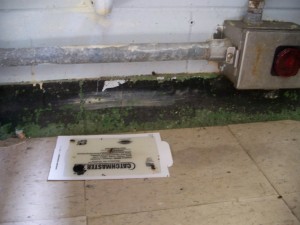

 .
.